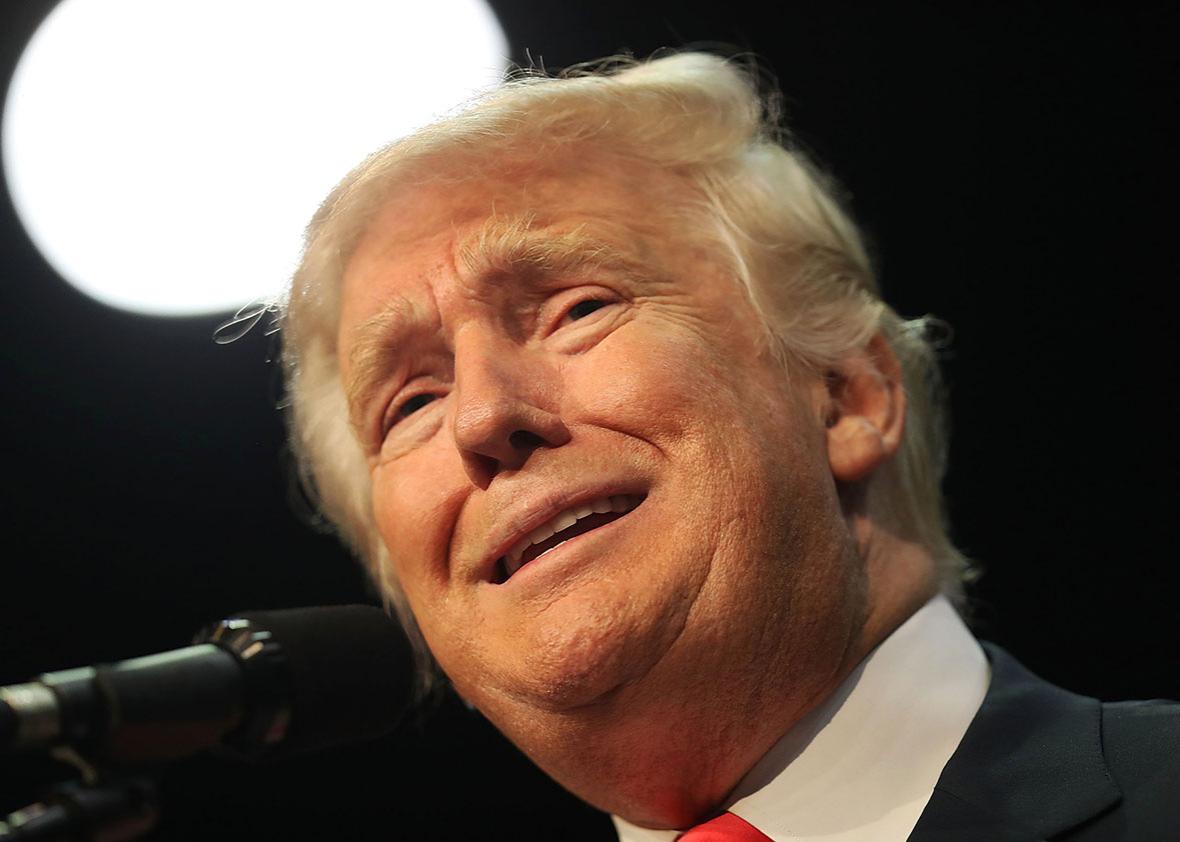Hillary Clinton’s campaign and the main super PAC supporting it are pulling some ads out of Virginia and Colorado. Not forever: The super PAC, Priorities USA, says it will be back on the air at the end of the month, and the Clinton campaign says that at this moment it is still running a handful of Virginia ads. But consider the states where the Clinton campaign, at least, will continue running state-specific ads without interruption: Ohio, Pennsylvania, Nevada, Florida, Iowa, New Hampshire, and North Carolina. Apparently it considers Virginia and Colorado safer than all of them at this point.
The withdrawals are shocking because these are not traditional blue states. Barack Obama converted them in 2008 and held onto them in 2012. It takes the mind some time to adjust first to the changing of the colors and then, after multiple elections, their deepening. But the numbers seem to check out. Clinton has always polled strongly in Virginia, and there haven’t been any new public polls since the Democratic convention or her selection of Virginia Sen. Tim Kaine as her running mate—or, for that matter, since the beginning of Trump’s ongoing nightmare week. Colorado, meanwhile, hasn’t looked competitive for a while.
Take these two states and their 22 electoral votes off the table and Trump’s available paths narrow from a few to … two. Let’s start with the 2012 map as a baseline. Trump could flip Florida, Ohio, and Pennsylvania to get to 273. He could win Florida and Ohio, lose Pennsylvania, and then win Nevada, Iowa, and New Hampshire to get to 269—i.e., an Electoral College tie and a vote in the House of Representatives. There’s still time for other states to enter competition: Maybe Michigan or Wisconsin starts feeling the red itch. And then there’s always the path in which Trump wins every state, beautifully, by a landslide, look at these crowds, and it would be terrific, just terrific.
Here’s the problem with the first two scenarios. His chances of winning either Pennsylvania or New Hampshire seem next to none. It is strange how deeply observers have been entertaining the idea of Pennsylvania as a true toss-up state, as though the punditocracy is 100-percent composed of alarmist Ed Rendell clones. Some weird numbers have come out of the state, but it all averages out to a mid-high single-digit Clinton lead. As does New Hampshire.
Trump has so few Electoral College paths—i.e., he’s losing the election—because he is an unqualified, ungrounded, and omnidirectionally offensive presidential candidate. If you look at the narrowing of his map and the still-scant post-convention state polls, you can see early signs of how and to whom that’s playing out. The arguments about how Trump could reshape the map have always centered on him rallying to his side white working-class voters, especially men, in overwhelming numbers. That’s not happening. What he is doing, though, is turning off college-educated suburbanites. And that’s why the narrow map you see is what it is.
Consider Pennsylvania, which, according to legend, is always decided in the suburbs of Philadelphia. Well, about that: As MSNBC’s Steve Kornacki noted on Thursday, Obama won the southeast counties of Pennsylvania by 9 percentage points in 2012, and he won the state itself by about 5 percentage points. The latest Franklin & Marshall poll of the state released Thursday showed Clinton up 11 points on Trump in a two-way race and 13 in a four-way race. She was leading in the southeast counties by 40 points, 60 to 20.
Obama won Allegheny County—i.e., the Pittsburgh metropolitan area in Western Pennsylvania—by 14 percentage points in 2012. Thursday’s poll had Clinton up by 19. It’s not because Clinton’s support had jumped, either; it was actually, at 52 percent, 4 percentage points lower than Obama’s 56 percent. But while Romney earned 42 percent in Allegheny in 2012, Trump was sitting at 33 percent. That means you’ve got Republican-leaners in the Pittsburgh area not sold on Trump.
It’s not just the college-educated, suburban swing voters in Pennsylvania who decide these elections anymore. It’s the folks in growing metropolitan regions around Denver; Northern Virginia; Charlotte and Raleigh-Durham, North Carolina; and Atlanta. These are people with whom Republicans at the very least need to improve on from the Obama years instead of scaring them away even further. We’re talking 45-year-old suburban married women who are ready to vote against a third consecutive Democratic presidential term but can’t bring themselves to do it, because the Republican candidate thinks it would be sorta cool to play with nuclear weapons and watch them go BOOM.
Trump thinks he can stake his claim on the more demographically consistent states with higher numbers of voters without college degrees—Ohio, Pennsylvania, and New Hampshire—but you don’t need to be a yuppie to also fear a nuclear winter. And if your hatred of Hillary Clinton surpasses whatever global apocalyptic fears Trump has reintroduced to the day-to-day political discussion, bless him, then you were probably already a Republican. There weren’t enough of them for Romney in 2012, and there look to be fewer for Trump in 2016.
